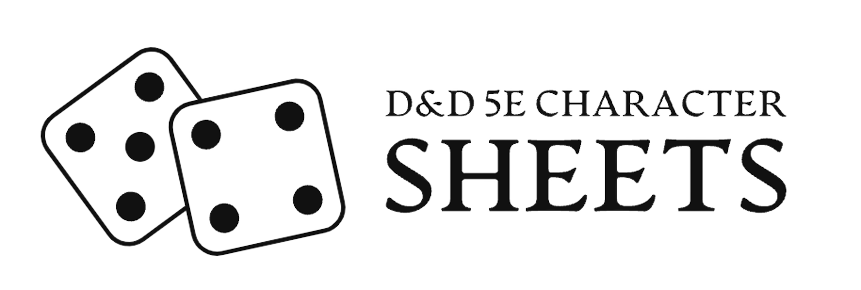Ever wondered how your Dungeons & Dragons character became the adventurer they are today? That’s where D&D backgrounds come in! They might seem like a small component, but they’re a vital part of every character in D&D 5th Edition. If you’re looking at the Player’s Handbook and wondering, “How do these work?” “What’s the best D&D 5e background for me?” or “Is this the right choice for my concept?” – allow us to explain everything you need to know!
Backgrounds in D&D 5e are a roleplaying element you choose during character creation. They give you and your fellow players a solid idea of where your character came from, their past experiences, and their place in the world before they started their adventuring life.
What Exactly is a Background in D&D 5E?
Think of your character’s background as the opening chapter to their personal story. It reveals your origins, how you became an adventurer, and your initial connections to the game world. For instance, your Fighter might have been a courageous knight sworn to an order, or perhaps a grizzled soldier hardened by past campaigns. Your Wizard could have been a reclusive sage poring over ancient texts, or a skilled artisan crafting wonders. Your Rogue? Maybe they survived as a guild thief navigating shadowy alleys, or perhaps they once commanded audiences as a clever jester.
Choosing a background provides you with important story cues and helps define your character’s identity. It also prompts some fantastic questions to explore:
- What changed? Why did your character stop doing what their background describes and decide to start adventuring?
- Resources: Where did you get the money for your starting gear? If you come from a wealthy background, why don’t you have more money now?
- Skills & Class: How did you learn the skills of your class? Was it connected to your background, or did something else lead you down that path?
- Uniqueness: What sets you apart from other ordinary people who might share your background?
Essentially: Your character’s Race explains what they ARE, their Class explains what they DO, and their Background explains how they LIVED.
What Does a Background Give Your Character?
Beyond the rich story implications, backgrounds provide tangible mechanical benefits that help shape your character’s capabilities:
- Skill Proficiencies: Typically, you’ll gain proficiency in two skills. For example, a Soldier might become proficient in Athletics and Intimidation, while a Sage might gain proficiency in Arcana and History.
- Tool Proficiencies and/or Languages: Many backgrounds grant proficiency with one or more types of tools (like thieves’ tools for a Criminal or an artisan’s tool for a Guild Artisan) or let you learn additional languages.
- Starting Equipment: You’ll receive a package of starting equipment relevant to your background, in addition to the gear you get from your class. This might include a set of common clothes, a specific tool, or a pouch with a small amount of gold.
- Background Feature: Each background comes with a unique feature – a special benefit that reflects your past. This could be a social connection (like the Acolyte’s “Shelter of the Faithful,” allowing them to receive aid from temples of their faith) or a particular knack (like the Urchin’s “City Secrets,” giving them an edge in navigating urban environments).
- Suggested Characteristics: To help you flesh out your character’s personality, each background offers suggestions for:
- Personality Traits (quirks and mannerisms)
- Ideals (beliefs that drive them)
- Bonds (connections to people, places, or events)
- Flaws (weaknesses or vices) You can use these as inspiration, pick your favorites, or roll a die to determine them randomly. They are fantastic for roleplaying!
How Many Backgrounds Are There in D&D 5E? (A Partial List)
Officially, across various D&D 5e books, there are dozens – probably 60 or even more! And that’s not even counting the hundreds of unofficial or homebrewed ones out there. To give you an idea of the variety, here’s a list of many official (and some setting-specific) backgrounds. (If you want a truly exhaustive guide detailing every single one from every sourcebook, visiting official D&D resources or dedicated wikis is a good idea!)
- Acolyte
- Anthropologist
- Archaeologist
- Adopted
- Black Fist Double Agent
- Caravan Specialist
- Charlatan
- City Watch
- Clan Crafter
- Cloistered Scholar
- Cormanthor Refugee
- Courtier
- Criminal
- Dissenter
- Dragon Casualty
- Earthspur Miner
- Entertainer
- Faction Agent
- Far Traveler
- Folk Hero (Note: This was listed twice in the original; it’s one background)
- Guild Artisan
- Guild Merchant
- Gate Urchin
- Gladiator
- Hermit
- Harborfolk
- Haunted One
- Hillsfar Merchant
- Hillsfar Smuggler
- House Agent
- Inheritor
- Initiate
- Inquisitor
- Investigator
- Iron Route Bandit
- Knight
- Knight of the Order
- Mercenary Veteran
- Mulmaster Aristocrat
- Noble
- Outlander
- Phlan Insurgent
- Phlan Refugee
- Pirate
- Sage
- Sailor
- Secret Identity
- Shade Fanatic
- Soldier
- Spy
- Student Of Magic
- Stojanow Prisoner
- Ticklebelly Nomad
- Trade Sheriff
- Urban Bounty Hunter
- Urchin
- Uthgardt Tribe Member
- Vizier
- Waterdhavian Noble (The item “Gladiator Arena” from the original list seemed like a typo or a note and has been omitted as it’s not a standard background name.)
This list showcases the incredible range available, helping you find something that truly fits the unique individual you want to play!
How to Choose the “Best” D&D 5E Background for Your Character
So, what is the best D&D 5e background? The truth is, there’s no single “best” one for everyone! The “best” background is the one that’s right for your specific character and what you want to get out of the game. Here’s how to pick a great one:
- Start with Your Character Concept: What kind of person are they? What was their life like before adventuring? Let your story guide your choice.
- Consider Skill Synergies: Look at the skills your class gives you. A background can help you gain other useful skills your class might lack, or double down on skills central to your character’s identity. For example, a Wizard might take the Sage background for more knowledge skills, or they might take the Urchin background for Stealth and Sleight of Hand to represent a very different kind of past.
- Look at the Feature: Read the background’s unique feature. Does it sound fun to roleplay? Does it offer a benefit you think will be useful or interesting in your campaign?
- Equipment and Tools: Do the starting equipment or tool proficiencies appeal to you or fit your character?
- Personality Hooks: Do the suggested personality traits, ideals, bonds, and flaws spark your imagination?
- Don’t Be Afraid to Customize! The Player’s Handbook encourages you to customize your background. You can swap out skill proficiencies, tool proficiencies, or even elements of the feature (with your DM’s approval) to perfectly match your character concept if none of the pre-written ones are quite right.
My personal favorites, just to throw some ideas out there, include backgrounds like Noble, Soldier, Criminal, Entertainer, Hermit, and Urban Bounty Hunter because they offer strong roleplaying hooks and useful features. But your list might be completely different, and that’s great!
Conclusion:
Hopefully, this guide has helped you understand how D&D backgrounds work, what they offer your character, and how to choose one that’s a perfect fit. They are a fantastic tool for grounding your character in the world and providing rich opportunities for roleplaying and adventure. If you’re ever unsure, talk to your Dungeon Master – they can help you pick or customize a background that will really shine in their campaign!

